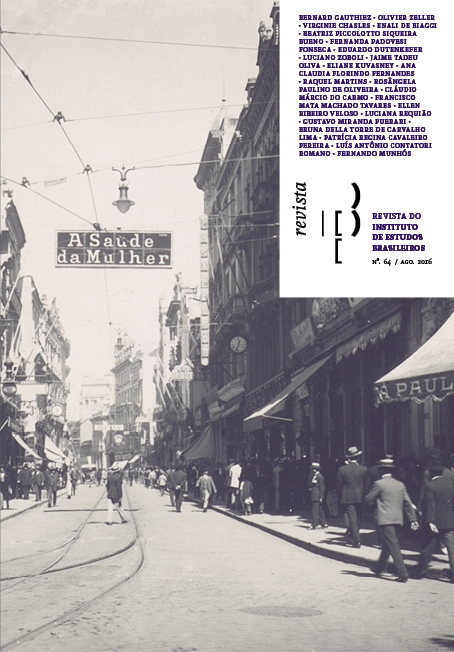Os mapas como “operadores espaciais” na construção da cidade de São Paulo do início do século XX
DOI:
https://doi.org/10.11606/issn.2316-901X.v0i64p167-182Palavras-chave:
Geo-história, cartografia, operadores espaciais, São Paulo, século XXResumo
Neste artigo busca-se compreender de que forma o ambiente de transformações do início do século XX influenciou e foi influenciado pela produção cartográfica, no caso específico dos mapas que estavam sendo produzidos representando a cidade de São Paulo e seu entorno. A hipótese deste trabalho é que a forma como a cartografia refletia as mudanças começou a participar da dinâmica da cidade e que os ingredientes dessa dinâmica (as ideias de crescimento e expansão, por exemplo) passaram a ser orientados pelos mapas, ou seja, os mapas tornaram-se “operadores espaciais”. O objetivo principal da pesquisa é contribuir para o desenvolvimento de uma geo-história cartográfica na perspectiva de analisar os mapas como fatos/fenômenos sociais e assim refletir sobre a extensão e duração desses fenômenos na organização e funcionamento dos espaços das sociedades.
Downloads
Downloads
Publicado
Edição
Seção
Licença
- Todo o conteúdo do periódico, exceto onde está identificado, está licenciado sob uma Licença Creative Commons do tipo atribuição CC-BY.



